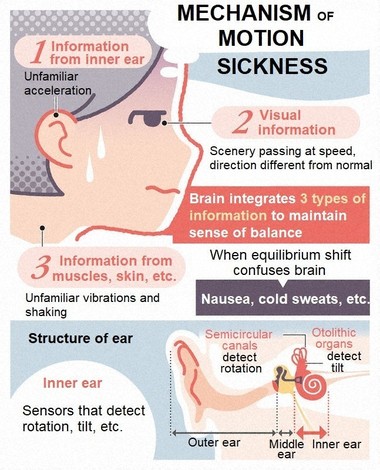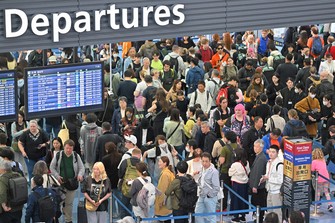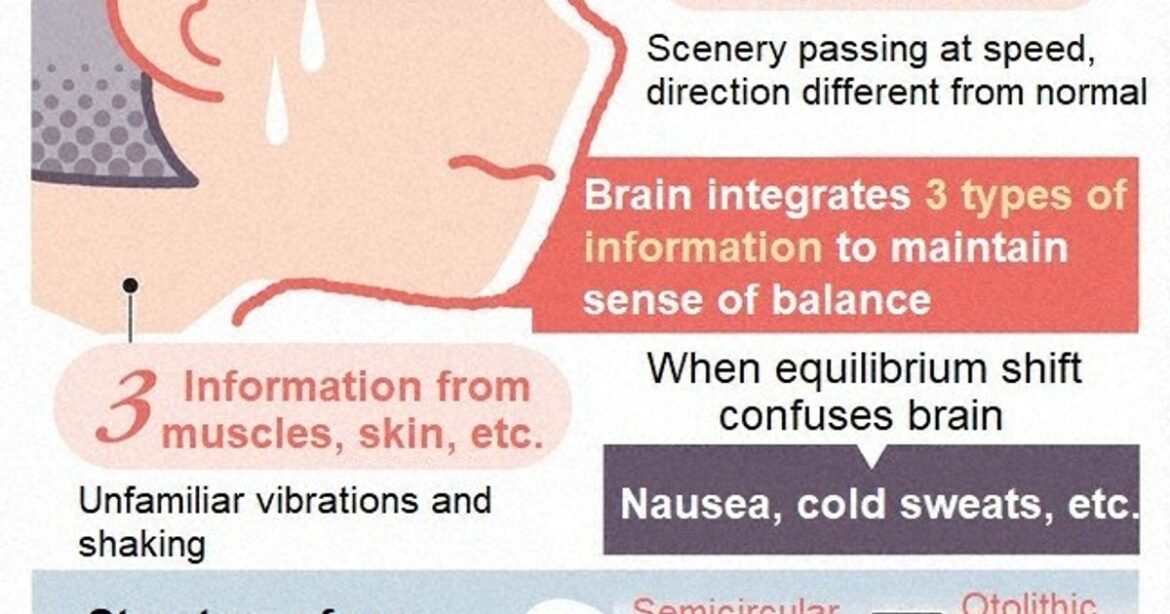
(Mainichi)
TOKYO — As the spring travel season arrives, opportunities for outings by car or other vehicles increase. At such times, people can be troubled by motion sickness. Is the common advice to “look into the distance” truly effective?
“Motion sickness is an alarm from the body signaling that something is amiss,” explains Izumi Koizuka, former head of the Department of Otolaryngology at the St. Marianna University School of Medicine.
Motion sickness, scientifically known as kinetosis, is broadly classified as a type of vertigo. However, unlike other forms of vertigo, motion sickness does not involve “nystagmus,” or involuntary eye movement.
Motion sickness is related to the body’s sense of balance. The body maintains balance by integrating three types of sensory information in the brain: input from the inner ear, which includes the semicircular canals; visual information from the eyes; and information from the skin and muscles, such as the sensation from the soles of the feet, technically known as somatosensory information.
The inner ear detects acceleration when riding in a vehicle. “Rotational acceleration,” which occurs when the head rotates, is sensed by the semicircular canals, while “linear acceleration,” experienced in elevators or during vehicle acceleration and deceleration, is detected by the inner ear’s sensory otolithic organs.

An international departure lobby at Tokyo’s Haneda Airport is seen crowded with passengers at the start of the Golden Week holiday period early on April 26, 2025. (Mainichi/Mimi Niimiya)
When traveling by car, bus, train, boat and so on, the inner ear experiences unfamiliar acceleration, and the scenery moves at unusual speeds or angles. This disrupts the body’s accustomed balance, causing the brain to become confused and think, “This is different, strange and dangerous.” The autonomic nervous system is accordingly stimulated, leading to symptoms like nausea, headaches and cold sweats. Theme park rides are also known to cause motion sickness.
So, what measures are effective? According to Koizuka, “looking at distant objects” is beneficial. This is because distant scenery appears to move more slowly than nearby objects, stabilizing visual information. Closing your eyes can also help.
Conversely, reading a book or looking at a smartphone can exacerbate motion sickness, as the eye movements and motion perceived by the body become misaligned.
Other preventive measures include ensuring adequate sleep, as sleep deprivation can disrupt the autonomic nervous system, Koizuka says. Taking anti-motion sickness medication is also effective. Many of these medications contain antihistamines, which suppress histamine, a substance that transmits the sensation of motion sickness to the brain.
By looking into the distance, using medication, and maintaining a relaxed state with proper rest, people can be better prepared.
(Japanese original by Taeko Terahara, Lifestyle, Science & Environment News Department)


AloJapan.com